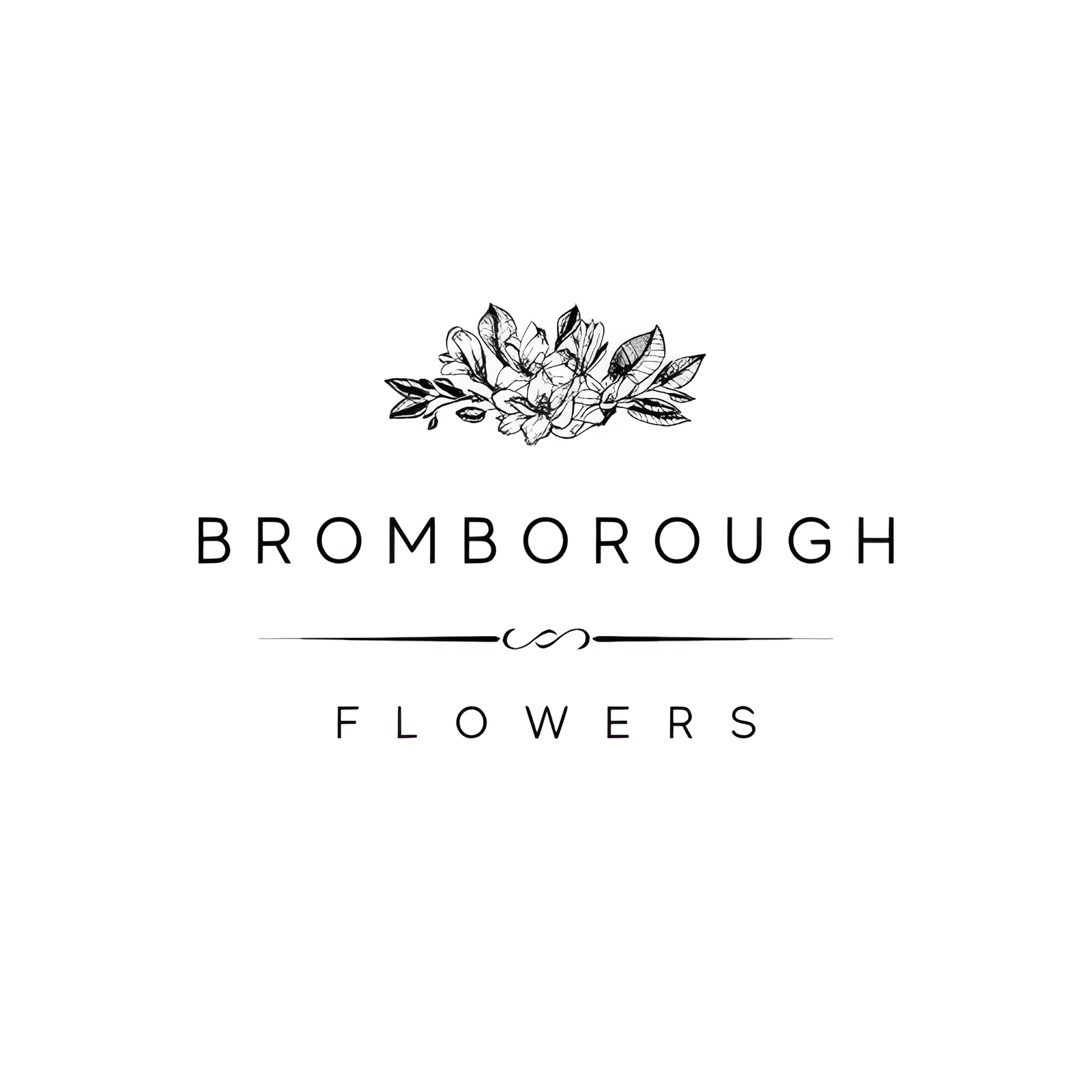Baby's Breath, scientifically known as Gypsophila, holds a cherished place in the domain of wedding florals due to its symbolism of everlasting love and purity. Characterized by its airy white or pink clusters, this flower brings an elegant simplicity to bridal bouquets and centerpieces. However, what truly sets Baby's Breath apart is its versatility in color choices and its ability to enhance volume and texture without overwhelming the composition. In the following sections, we will explore its varied hues, cultural significance, and practical applications, revealing why it remains a timeless choice for matrimonial celebrations.
Flower Overview
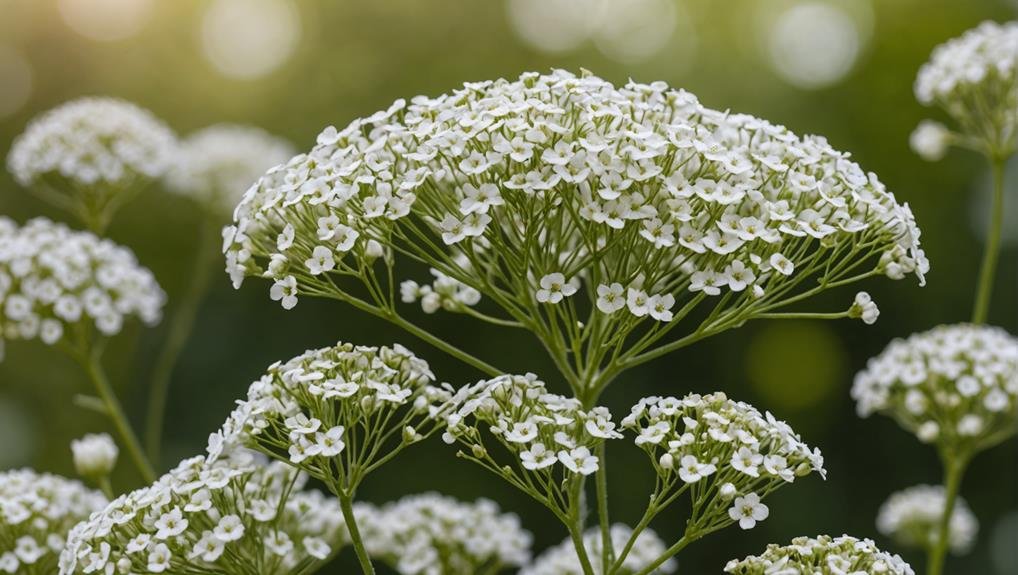
Baby's breath, scientifically known as Gypsophila, serves as a quintessential filler flower in floral arrangements, symbolizing everlasting love and purity. This delicate bloom is particularly favored as a wedding flower due to its subtle beauty and symbolic significance.
Often found in shades of white and pink, baby's breath complements a wide array of floral designs, adding an airy, ethereal quality to bouquets and centerpieces.
As a filler flower, baby's breath enhances the volume and aesthetic appeal of floral arrangements without overshadowing the primary blooms. Its ability to convey sentiments of everlasting love makes it a popular choice for wedding ceremonies and other romantic occasions.
The versatility of baby's breath extends beyond its visual appeal; its resilience and ease of cultivation make it a practical choice for gardeners and florists alike.
However, it is important to note that baby's breath is mildly toxic to pets and can act as an irritant to humans. Additionally, its invasive nature in some Western states necessitates checking local regulations before planting.
Despite these considerations, baby's breath remains a beloved staple in the world of floral design, cherished for its elegance and timeless charm.
Physical Description
Characterized by clusters of tiny white or pink blooms, Gypsophila presents an airy and delicate appearance that enhances the aesthetic of any floral arrangement. Commonly known as Baby's Breath, this flower is celebrated for its light, cloud-like texture and romantic charm. The plant's fine, branching stems support a multitude of small, star-shaped flowers, creating a soft, ethereal effect that is both timeless and versatile.
The physical description of Baby's Breath reveals a plant that can reach heights of up to 1 to 3 feet, with slender, wiry stems that contribute to its feathery look. The flowers themselves are typically less than half an inch in diameter, yet their abundance makes them a striking filler in bouquets and centerpieces. Each bloom consists of five delicate petals, surrounding a tiny central pistil and stamens, which together form a subtle yet intricate design.
Belonging to the genus Gypsophila, Baby's Breath is native to regions of Europe, Asia, and North Africa. Its elegant simplicity and light structure make it a popular choice for wedding decorations, where it is often used to complement larger, more vibrant flowers or to stand alone in minimalist arrangements.
Available Colour Varieties
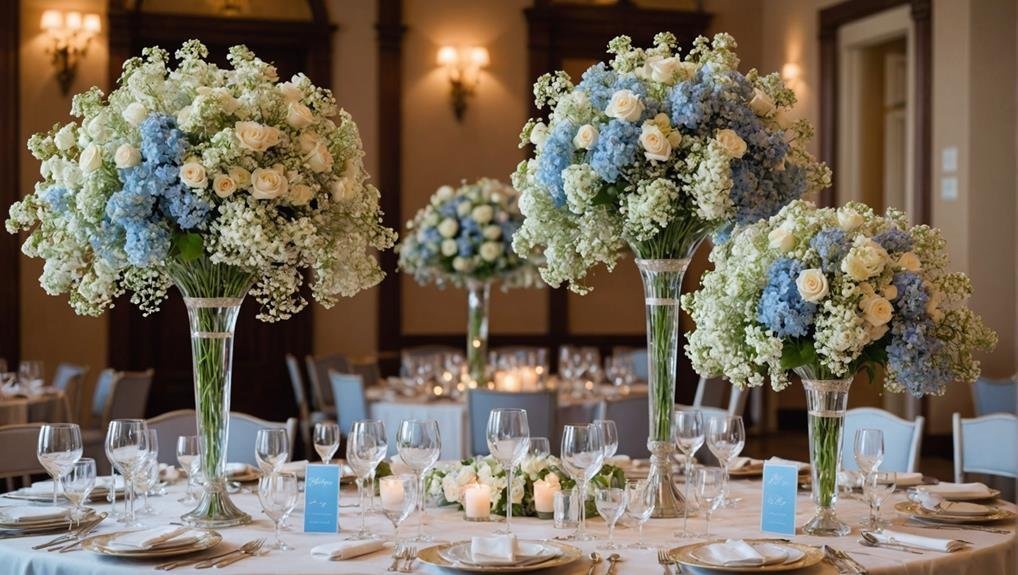
Expanding beyond its traditional white and light pink hues, Gypsophila offers a spectrum of colors, including blue, yellow, and green, allowing for greater creativity in wedding floral designs. These color variations enable brides and event planners to tailor their floral arrangements more precisely to the wedding's overall theme and aesthetic.
Historically, the classic white and light pink flowers of Gypsophila have been popular choices, often used as filler in bouquets to add volume and a delicate touch. However, the introduction of additional colors, such as blue, yellow, and green, provides an opportunity to create more dynamic and visually striking arrangements.
For instance, blue Gypsophila can add a serene, cool tone, while yellow varieties can infuse a burst of cheerful brightness. Green Gypsophila can introduce a fresh, natural element, often complementing other floral components.
The versatility offered by these diverse color options makes Gypsophila an invaluable asset in wedding floral design. Whether aiming for a traditional, romantic ambiance with white and light pink flowers, or seeking to make a bold statement with unconventional hues, Gypsophila serves as a flexible and appealing choice. This adaptability ensures that the floral arrangements can seamlessly enhance the wedding's unique style and theme.
Latin Name and Taxonomy
The Latin name for Baby's Breath is Gypsophila, a genus within the Caryophyllaceae family, encompassing approximately 100 species of flowering plants. This extensive genus includes various well-known species such as Gypsophila paniculata, Gypsophila elegans, and Gypsophila repens. Known for their delicate, airy clusters of small flowers, these species are often utilized in floral arrangements, particularly in weddings.
Taxonomically, Baby's Breath belongs to the order Caryophyllales, which also includes other notable plants like carnations and cacti. The classification under this order emphasizes its broad genetic relationships and botanical characteristics, which contribute to its widespread use and popularity. Understanding the taxonomy of Gypsophila can provide valuable insights into its cultivation, care, and potential applications in horticulture and floristry.
The genus Gypsophila derives its name from the Greek words 'gypsos' (gypsum) and 'philos' (loving), indicative of its preference for gypsum-rich soils. This taxonomic detail underscores the plant's adaptability and resilience in various growing conditions. By grasping the taxonomy and Latin nomenclature of Baby's Breath, florists and gardeners can better appreciate its unique attributes and optimize its use in diverse floral designs.
Geographical Origins
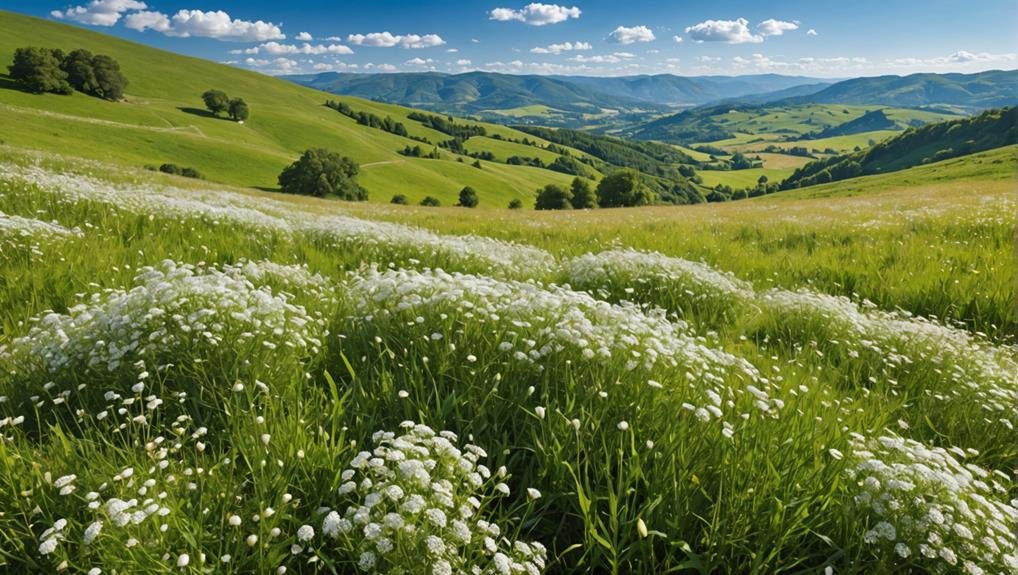
Originating from a diverse range of regions, Baby's Breath is native to parts of Europe, Asia, and North Africa. This delicate flower, scientifically known as Gypsophila, thrives in various climatic conditions across these continents. Its adaptability to differing environments has contributed to its widespread cultivation and popularity in floral arrangements worldwide.
In Europe, Baby's Breath is found in countries such as Poland and Italy, where it grows abundantly in meadows and rocky terrains. Asia's vast regions, including Turkey and the Caucasus, provide a favorable habitat for this resilient flower. Additionally, North Africa's Mediterranean climate supports the growth of Gypsophila in countries like Morocco and Tunisia.
Below is a table summarizing the geographical origins of Baby's Breath:
| Region | Example Countries | Climate Characteristics |
|---|---|---|
| Europe | Poland, Italy | Temperate, with varied terrains |
| Asia | Turkey, Caucasus | Diverse, from temperate to arid |
| North Africa | Morocco, Tunisia | Mediterranean, warm and dry |
The geographical distribution of Baby's Breath across these regions has not only influenced its availability but also its symbolic meanings, often associated with purity and everlasting love. Understanding its origins enhances our appreciation of this versatile and charming flower.
Season Availability
Given its widespread geographical origins, Baby's Breath enjoys year-round availability, making it an ideal choice for weddings and special events regardless of the season. This constant accessibility guarantees that florists and event planners can rely on this delicate yet versatile flower for a wide range of floral designs, from elaborate wedding bouquets to simple, elegant centerpieces.
The season availability of Baby's Breath means it can be seamlessly integrated into any wedding theme, whether it be a spring garden celebration or a winter wonderland affair. While the quality of Baby's Breath might experience slight variations depending on the time of year, its enduring popularity and aesthetic appeal remain unchanged. This makes it a perfect choice for brides and grooms who seek consistency and beauty in their floral arrangements.
Furthermore, Baby's Breath is not only used as a filler but can also stand alone in bouquets, adding a soft, airy touch to any arrangement. Each stem is delicate and requires careful handling to maintain its freshness and charm.
This flower's adaptability and constant availability underscore its status as a favored option in the realm of wedding florals.
Growing Conditions
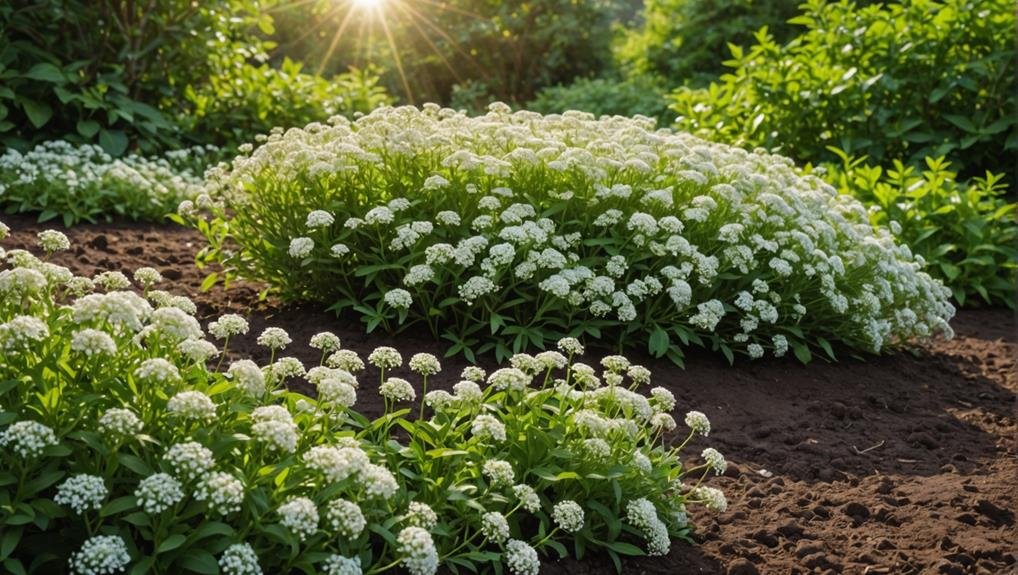
Thriving in full sun, Baby's Breath flourishes best in alkaline to neutral soil with excellent drainage, particularly in USDA zones 3 to 9. This hardy perennial is a popular choice for wedding arrangements due to its delicate, cloud-like clusters of tiny white flowers. Ensuring ideal growing conditions is necessary to prevent root rot, which can be a significant issue if the soil retains excess moisture.
Starting Baby's Breath from seed indoors about 6-8 weeks before the last frost date is recommended for those looking to cultivate this plant. This head start allows seedlings to develop strong roots, which are essential for their eventual outdoor transplant.
Once the threat of frost has passed, typically after the last frost date, direct seeding can commence as the soil warms up. This method is especially effective in regions where spring temperatures are unpredictable.
When transplanting seedlings, select a location that receives full sun throughout the day. This exposure is important for the plant's health and bloom production. Additionally, maintaining well-drained soil conditions is essential to avoid root rot, ensuring the longevity and vigor of your Baby's Breath plants for season-long enjoyment.
Cultural Significance
Baby's Breath (Gypsophila) holds a deep cultural importance, symbolizing eternal love and purity in weddings and other life celebrations. This delicate flower, often used as a filler in bouquets, adds both texture and volume to floral arrangements. Its delicate appearance brings an element of grace and allure, making it a favored choice among wedding flowers.
In various cultures, Baby's Breath is associated with new beginnings and family connections, underscoring its role in significant life events. The flower's symbolism extends beyond weddings, representing innocence and self-discipline. These attributes align with the themes of purity and commitment, which are central to marital unions. Therefore, Baby's Breath is not just a decorative element but a meaningful addition to any celebratory event.
The cultural importance of Baby's Breath is deeply rooted in its ability to convey timeless emotions. By embodying eternal love, it serves as a tribute to enduring relationships and the purity of new life chapters. Hence, its inclusion in wedding flowers and other celebratory arrangements is both a nod to tradition and a reflection of the profound emotions that these occasions encapsulate.
Typical Use in Weddings
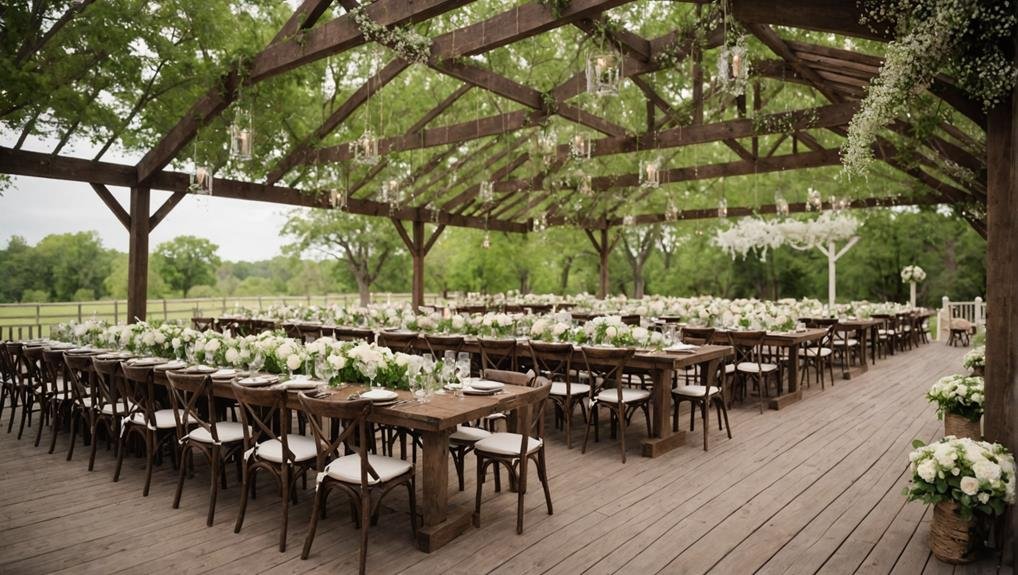
In wedding ceremonies, Baby's Breath is frequently used to enhance the volume and texture of floral arrangements such as bouquets, centerpieces, boutonnieres, and corsages. This delicate flower, with its small, white blooms, is perfect for adding a touch of elegance and sophistication to any wedding setting. Its symbolism of everlasting love, purity, and new beginnings makes it an ideal choice for such a momentous occasion.
Baby's Breath is often employed as a filler flower, creating a lush and full appearance in bridal bouquets and table centerpieces. Its versatility allows it to complement a wide range of other flowers, seamlessly blending into various design themes, from rustic to modern. Boutonnieres and corsages also benefit from the inclusion of Baby's Breath, adding a refined touch without overshadowing the primary flowers.
Moreover, Baby's Breath is an affordable option, making it a budget-friendly choice for couples looking to achieve a stunning floral display without excessive costs. The availability of dried Baby's Breath offers a long-lasting alternative to fresh flowers, maintaining its shape and color for extended periods, making it perfect for keepsakes and lasting memories. This durability ensures that floral arrangements remain beautiful throughout the wedding day and beyond.
Alternative Flower Types
While Baby's Breath adds a delicate touch to wedding arrangements, exploring alternative flower types can offer a diverse palette of colors, shapes, and textures to enhance the overall floral design. Take into account the following options to create visually stunning and meaningful bouquets:
- Roses: Symbolizing love and romance, roses are a timeless choice for wedding bouquets. Available in a wide range of colors, they can easily match any wedding theme and add a classic elegance to the arrangements.
- Peonies: Known for their lush, full blooms, peonies represent prosperity and good fortune. Their soft, romantic appearance makes them a popular choice for spring and early summer weddings, adding a touch of luxury to any bouquet.
- Hydrangeas: These voluminous flowers symbolize heartfelt emotions and are perfect for creating large, impactful displays. Hydrangeas come in various shades, including blues, pinks, and whites, making them versatile for different wedding color schemes.
When selecting alternative flower types, it is essential to take into account their seasonality, availability, and personal preferences. Mixing these flowers can create a dynamic and personalized floral display, ensuring that each bouquet stands out.
Ultimately, incorporating a variety of flowers will not only enhance the aesthetic appeal but also add depth and meaning to your wedding arrangements.
